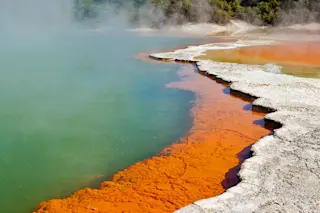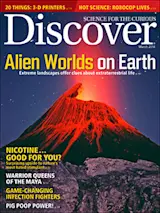North Island, New Zealand
38S 51' 0.9396" 175E 55' 6.8838"
Beneath New Zealand’s snow-dusted peaks and placid blue lakes, the planet is restless. The island nation sits atop an active subduction zone where the Pacific Plate slips below the Australian Plate. In the Central North Island, in a wedge-shaped region called the Taupo Volcanic Zone, tectonic forces stretch Earth’s crust dramatically. Elsewhere on our planet, continental crust has an average thickness of about 24 miles. But in the TVZ, it can be less than 10 miles thick. That thin skin gives researchers and tourists alike an unparalleled look at geologic forces.
“We have some of the best geophysical surface features in the world,” notes Brad Scott, who has worked in the TVZ since 1974 as a volcanologist for GNS Science, a geoscience research service.
From his home in Rotorua, where the sulfurous smell of geothermal activity is always in ...















